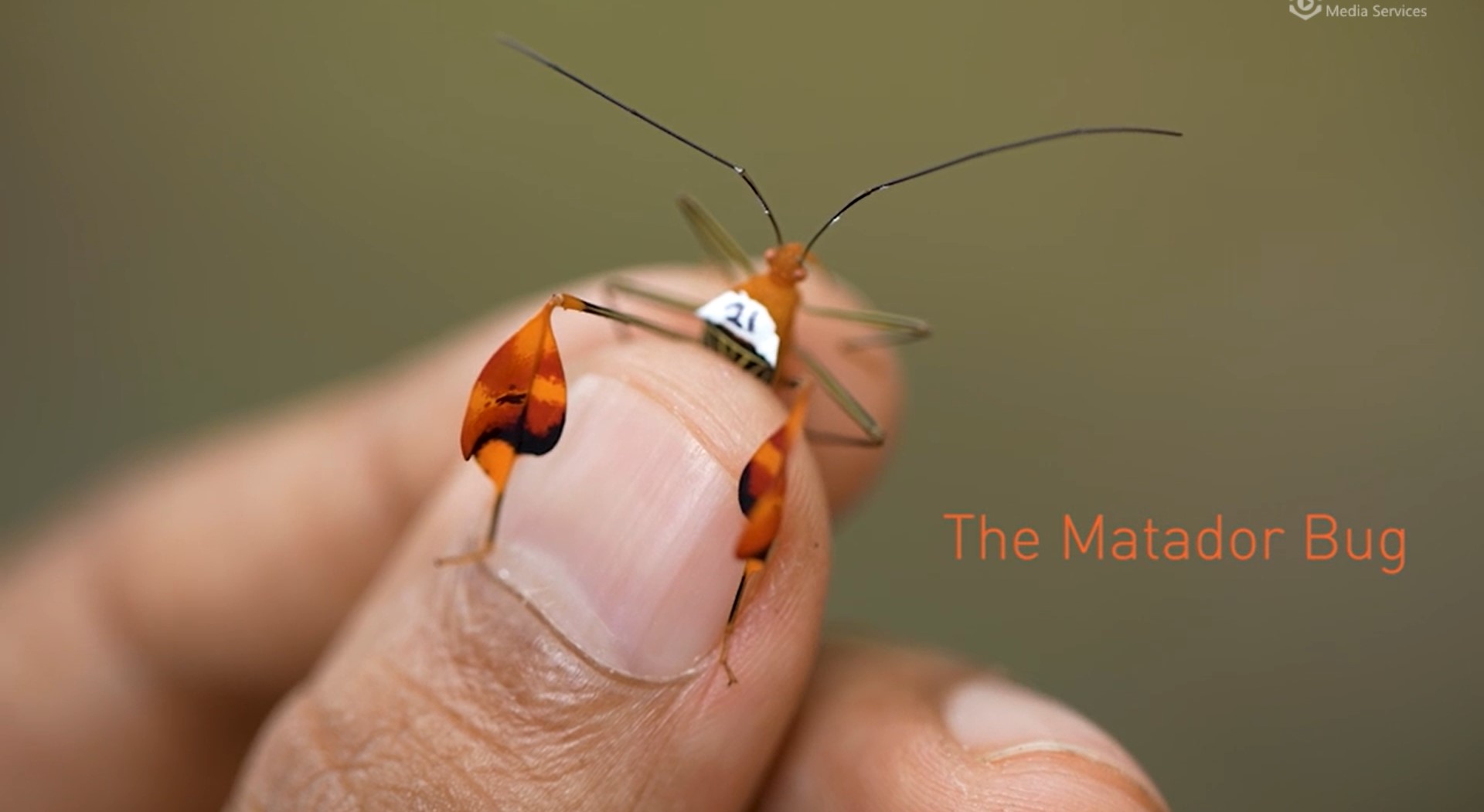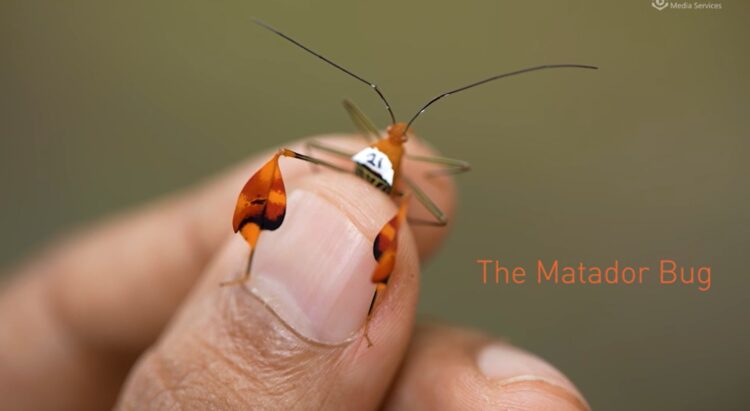Male peacocks shake elaborate trains—a dazzling mating display—and male peacock spiders also dance, showing off brightly-colored abdomens. Nature’s most bizarre and conspicuous displays often evolved to attract mates. But when researchers at the Smithsonian Tropical Research Institute (STRI) began to study the matador bug, an insect that waves its flag-like, brightly-colored legs, they found something unexpected. The go-to explanation is that leg-waving ancestors attracted more or better mates, but the STRI scientists found no evidence that the matador bugs wave their legs to attract a sexual partner. Science begins with observation, and some of our most significant discoveries come from unlikely places.

Credit: Ana Endara, Smithsonian Tropical Research Institute
Male peacocks shake elaborate trains—a dazzling mating display—and male peacock spiders also dance, showing off brightly-colored abdomens. Nature’s most bizarre and conspicuous displays often evolved to attract mates. But when researchers at the Smithsonian Tropical Research Institute (STRI) began to study the matador bug, an insect that waves its flag-like, brightly-colored legs, they found something unexpected. The go-to explanation is that leg-waving ancestors attracted more or better mates, but the STRI scientists found no evidence that the matador bugs wave their legs to attract a sexual partner. Science begins with observation, and some of our most significant discoveries come from unlikely places.
“The very nature of discovery is that we can’t anticipate where our questions lead,” said Ummat Somjee, STRI post-doctoral fellow whose work on sexual selection and insect weaponry has been featured in the New York Times, “By following our curiosity we sometimes uncover unexpected realities, leading us to re-evaluate our view of nature and the very questions we ask in the first place.”
If males use the flags to signal aggression or to attract mates, bigger males would likely have bigger flags and females would probably not have large flags. The female peacock, after all, does not boast a flashy train. An international team from institutions in the United Kingdom, Panama, the United States, Switzerland, and Germany set out to find out if this was the case.
To tell the bugs apart, they marked each with dots of non-toxic paint. They recorded how long the bugs waved and the distance between the three bugs in each round. Overall, they documented more than 745 wave displays.
All their evidence indicates that flag-waving is not about sexual attraction.
The size of the flags was not different regardless of the sex of the bug. For both males and females, bigger bugs usually had bigger flags. Females had larger bodies than males overall, but their flags were not bigger than flags of males of the same size. Males and females both waved about the same number of times and at about the same rate. Insects were more likely to wave when others were further away, not when they were closer to each other. So no differences were found in waving behavior between males and females. It didn’t matter if the groups of bugs were all male, all female or mixed.
If sex isn’t the reason for this behavior and these structures, then why do these bugs wave their legs?
Could these bugs be advertising their toxicity to predators? The colorful flags develop in juveniles, before the insects are sexually mature, and when they are wingless and more vulnerable to predator attack, so bright colors could be ‘don’t eat me’ signal. Or maybe like a bullfighter in a ring, the brightly colored legs act like the matadors cloak, to distract attacks away from the main body? Nearly one in six matador bugs in the wild is missing a hind leg. Maybe it is better to sacrifice a leg, than to suffer a direct attack? This research has led to many more questions, so the mystery has only deepened, paving the way for future studies.
Why is this important? In Panama, where this work was done, and in neighboring Costa Rica, matador bugs, Anisosclelis alipes, are common pests on passion fruit, Passiflora edulis, farms. Who knows? Maybe knowing more about how matador bugs interact with predators could result in a better way to protect plants than spraying chemical insecticides that also kill beneficial insects: something to test in the future. Good ideas come from paying attention and doing careful research to better understand the natural world.
The first author of the paper, Cameron Longbottom, was an undergraduate intern from Manchester University in the United Kingdom:
“Being in the field in Panama is so different from watching nature shows on the internet. To see animals in their own habitats—you don’t get that in many places—to study this bug that’s on the cover of the Lonely Planet guidebook and the Magic Web, but no one knows anything about it makes it exciting, we are telling the world something new. I would love to go back. There is still so much to learn.”
Journal
Journal of Insect Behavior
DOI
10.1007/s10905-022-09809-0
Article Title
Why does the Matador Bug, Anisoscelis alipes (Hemiptera: Coreidae), Wave its Brightly Colored Legs?
Article Publication Date
24-Dec-2022





